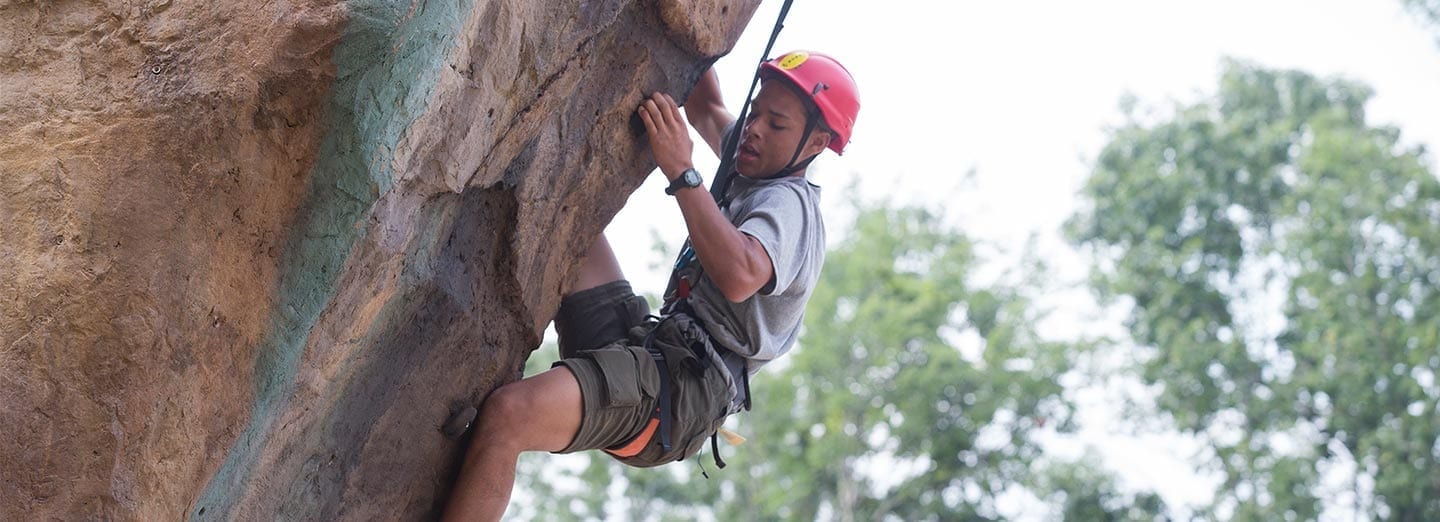
SUMMARY
Young people today seek greater challenges, and climbing and rappelling offer a worthy challenge. While the Climbing merit badge spurs interest in these activities, the proliferation of climbing gyms and facilities has also made climbing and rappelling readily available. Knowing and following the BSA’s guidance will help units execute a fun and safe activity for all.
GENERAL INFORMATION
Climb On Safely is the Boy Scouts of America’s procedure for organizing BSA climbing/rappelling activities. Here are the basics:
- Qualified Supervision—A mature adult at least 21 years of age who understands the risks of climbing is needed. Additionally, one adult supervisor is required for every 10 participants. Ensure someone in the group is currently trained in first aid and CPR.
- Qualified Instructors—A minimum of two instructors is needed, but more may be necessary to keep a 6-to-1 ratio of participants to instructors.
- Physical Fitness—All participants are required to have an Annual Health and Medical Record to show evidence of fitness.
- Safe Area—Use an established climbing/rappelling site or facility. Survey the site in advance for possible hazards and ensure it can accommodate the number of participants.
- Equipment—Verify proper equipment is available and meets requirements outlined in Belay On.
- Planning—Share your plans, secure any permits or permissions for venues/sites, obtain weather reports, and have emergency plans in place.
- Environmental Conditions—Monitor potentially dangerous conditions like loose, crumbly rock; poisonous plants; wildlife; and inclement weather.
- Discipline—All participants should respect and follow all instructions and rules. Learn and present the rules prior to the outing.
CHALLENGE BY CHOICE
Practice Challenge by Choice, a concept that allows individuals to choose the level at which they want to participate in the various climbing activities without being pressured or coerced by the group and without having to justify their choice.
SAFETY CHECK
- Clothing—No baggy clothing, jewelry removed, and long hair tucked in
- Harness/Helmets—Properly fitted helmets; belay and buckles attached per manufacturer
- Environment—Program areas free from obstructions; people on ground in safe location
- Connections—Belay system connections and all rigging checked and rechecked
- Knots—Properly tied, dressed, and backed up with a safety knot


